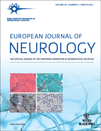Mortality risk in adults with newly diagnosed and chronic epilepsy: a population-based study
Abstract
Background: We analyzed mortality in adult patients with newly diagnosed and chronic epilepsy over a 13-year period.
Methods: Eighty-one patients aged ≥20 years with newly diagnosed epilepsy and 309 adult patients with chronic epilepsy were originally identified from population-based incidence and prevalence studies conducted in Tartu between 1994 and 1996. Patients with epilepsy were followed until the date of death or until the end of 2007. The standardized mortality ratio (SMR) was analyzed for both cohorts. The influences of age at diagnosis, sex, epilepsy syndrome, seizure type, risk factors and treatment compliance on the SMR were also investigated.
Results: The SMR was significantly increased in both cohorts, but was higher in patients with chronic epilepsy (SMR 3.1; 95% confidence interval [CI] 2.5–3.8) relative to patients with newly diagnosed epilepsy (SMR 2.6; 95% CI 1.8–3.5). In the newly diagnosed epilepsy cohort, the increased mortality risk was more pronounced in patients with complex partial seizures (SMR 5.6; 95% CI 2.4–11.0). In the chronic epilepsy cohort, the mortality risk was higher in patients with secondary generalized tonic-clonic seizures (SMR 3.4; 95% CI 2.5–4.5). Non-compliant patients had twice the mortality risk (SMR 4.2; CI 95% 2.7–6.2) compared to those who were on anticonvulsant treatment.
Conclusions: Mortality rates are higher in people with newly diagnosed and chronic epilepsy. Mortality risks should be discussed with patients with epilepsy, especially if anticonvulsant treatment is refused despite recurrent seizures.




